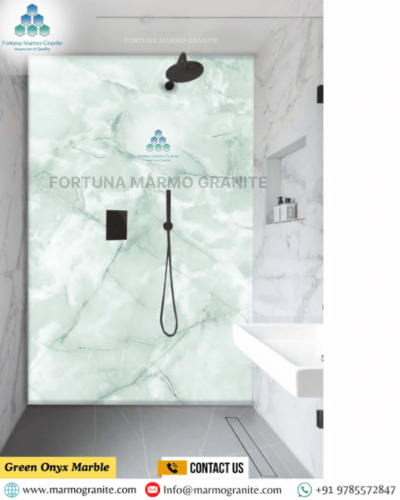How to Repair Small Chips in Marble Tile: A Step-by-Step DIY Guide
How to Repair Small Chips in Marble Tile Marble tiles are truly special. They bring such elegance and timeless beauty to any home, creating a truly luxurious feel. Because marble is a natural stone, it's also wonderfully unique. However, its natural softness means it can sometimes get small chips, especially in busy areas or from accidental bumps.
But don't worry! A tiny chip doesn't mean a big disaster. For these small imperfections, you often don't need a professional. With a little patience, the right eco-friendly materials, and this easy DIY guide, you can restore your marble's perfect look. You'll save money too! This guide will show you every step. We'll help you assess the chip's size, clean the area thoroughly, choose the best repair epoxy or filler, and then polish the surface for a seamless finish. You'll learn how to handle minor imperfections with confidence.
Understanding Your Marble: Why Chips Happen
Before trying a DIY granite chip repair, first check if the damage is suitable for a simple fix. Chips that are pea-sized or smaller are usually manageable at home. Larger or deeper chips, especially those with cracks spreading outward, often need professional repair to restore strength and appearance. The depth of the chip also matters. Surface-level chips that don't expose the subfloor or base material are ideal for DIY solutions, while deeper chips revealing the material beneath should be left to experts. The chip's location is another key factor.
Gathering Your Arsenal: Essential Tools and Materials
- Marble Repair Kit: This is your core component. Look for kits specifically designed for natural stone, ideally with various shades of epoxy or resin to match your marble. These kits often include a hardener, mixing sticks, and sometimes even polishing compounds.
- Acetone or Denatured Alcohol: For thorough cleaning and degreasing.
- Clean Cloths or Microfiber Towels: For cleaning and wiping.
- Painter's Tape: To protect the surrounding area.
- Razor Blade or Putty Knife: For scraping off excess repair material.
- Fine-Grit Sandpaper (600-grit to 2000-grit): For smoothing the repaired area
- Marble Epoxy or Resin: For filling the chip before polishing.
- Razor Blade or Putty Knife: To level off excess filler material.
- Mild Marble Cleaner: For cleaning the surface before and after repair.
- Sandpaper (various grits): To smooth the repair before polishing.
- Microfiber Cloth: For final wiping and shine enhancement.
- Small Mixing Tray: To prepare the epoxy or filler.
- Wooden Stick or Applicator: For applying filler precisely.
The Step-by-Step DIY Repair Process
Step 1: Clean and Prepare the Chipped Area
Thorough cleaning is paramount for a successful repair. Any dirt, grease, or debris will prevent the repair material from bonding properly.
- Remove Loose Debris: Carefully brush away any loose marble fragments or dust from within and around the chip. You can use a small brush or even a can of compressed air for this.
- Clean with Acetone/Denatured Alcohol: Dampen a clean cloth with acetone or denatured alcohol and thoroughly wipe the chipped area and the immediate surroundings. This will remove any oils, waxes, or residues that could interfere with adhesion. Allow the area to dry completely.
- Mask the Surrounding Area: Apply painter's tape tightly around the perimeter of the chip. This will protect the undamaged marble from accidental spills and make it easier to scrape off excess repair material later. If you have a larger area to protect, use masking paper in conjunction with the tape.
Step 2: Mix the Repair Material
This is where your marble repair kit comes in. Carefully read and follow the manufacturer's instructions for mixing the epoxy or resin. This is crucial as incorrect ratios can affect drying time, hardness, and durability.
- Dispense Components: Dispense the recommended amounts of the two-part epoxy/resin and hardener onto a clean, disposable surface (like a piece of cardboard or a plastic lid).
- Add Color (If Applicable): If your kit allows for color tinting, add small amounts of the color pigments to match your marble. Start with a very tiny amount and gradually add more, mixing thoroughly after each addition, until you achieve a close match to your marble's base color and veining. Remember, it's easier to add more color than to take it away.
- Mix Thoroughly: Using a mixing stick, thoroughly blend the epoxy/resin, hardener, and any colorants. Mix until the color is uniform and there are no streaks. This typically takes a minute or two. Work quickly, as the working time for epoxy is limited once mixed.
Step 3: Apply the Repair Material
Now it's time to fill the chip.
- Apply with Precision: Using a small spatula, toothpick, or the applicator provided in your kit, carefully apply the mixed repair material into the chipped area.
- Slightly Overfill: Slightly overfill the chip, creating a small mound above the surface of the marble. This accounts for any shrinkage during drying and ensures you have enough material to sand down to a flush finish.
- Work in Layers (for deeper chips): If your chip is a bit deeper, it's better to apply the material in thin layers, allowing each layer to cure partially before applying the next. This helps prevent air bubbles and ensures a stronger bond.
Step 4: Allow to Cure
Patience is a virtue here! The curing time will vary depending on the specific repair kit and ambient temperature and humidity.
- Refer to Instructions: Consult your repair kit's instructions for the recommended curing time. This can range from a few hours to overnight.
- Do Not Disturb: Resist the urge to touch or disturb the repaired area during the curing process. Any pressure or movement can compromise the bond.
- Ensure Good Ventilation: Some epoxy formulations can release fumes during curing, so ensure adequate ventilation in the area.
Step 5: Polish to Restore Shine
This is the final and most satisfying step, where you bring back your marble's natural luster.
- Clean the Area Again: Thoroughly clean the sanded area with a damp cloth to remove any remaining sanding residue. Let it dry completely.
- Apply Polishing Compound: Apply a small amount of marble polishing compound onto the repaired area.
- Buff to a Shine: Using a soft buffing pad or a clean microfiber cloth, buff the area with firm, circular motions. Continue buffing until the repair blends seamlessly with the surrounding marble and achieves a matching shine. You may need to apply more compound and buff multiple times to reach the desired level of gloss.
Step 6: Final Inspection and Sealing (Optional but Recommended)
- Inspect Thoroughly: Stand back and inspect the repaired area from different angles and under various lighting conditions to ensure the repair is invisible and the shine is uniform.
- Apply Marble Sealer: While not strictly part of the repair, it's highly recommended to apply a high-quality marble sealer to the entire tile, or even the whole floor/countertop, after the repair is complete. Sealing will help protect your marble from future stains and enhance its longevity. Follow the sealer manufacturer's instructions for application and curing.
Maintenance Tips for Your Marble Tiles
Once your chip is repaired, a little preventative maintenance can go a long way in keeping your marble looking its best and preventing future damage.
- Clean Spills Immediately: Marble is porous and susceptible to etching from acidic liquids (wine, lemon juice, vinegar) and staining from oils or colored liquids. Wipe up spills immediately.
- Use pH-Neutral Cleaners: Never use abrasive or acidic cleaners on marble. Stick to cleaners specifically designed for natural stone, or simply warm water and a mild, pH-neutral dish soap.
- Use Coasters and Trivets: Protect marble countertops from heat and moisture by using coasters under glasses and trivets under hot dishes.
- Place Mats at Entrances: For marble floors, use doormats at entryways to trap dirt and grit that can scratch the surface.
- Regular Sealing: Re-seal your marble periodically, typically every 6-12 months, depending on usage and the type of sealer used. This creates a barrier against stains.
- Avoid Dragging Heavy Objects: Lift, don't drag, heavy furniture or appliances across marble surfaces. Use furniture sliders if necessary.
Conclusion
Indian Marble Tiles Supplier How to Repair Small Chips in Marble Tile repairing small chips in marble tile may seem like a delicate task, but with the right preparation, technique, and patience, it can be successfully managed as a DIY project. Whether the chip is a result of heavy impact, accidental dropping of objects, or long-term wear and tear, addressing it promptly not only restores the aesthetic value of the surface but also prevents further damage. By following a systematic step-by-step guide—starting from cleaning the chipped area, selecting the appropriate filler, applying it with care, and finishing with sanding and polishing—you can breathe new life into your marble surface without replacing the entire tile.
Moreover, At Fortuna Marmo Granite, we not only specialize in the export and supply of high-quality Indian marble tiles and slabs across the globe but also provide expert insights and guidance on the care, repair, and long-term maintenance of marble surfaces. Consequently, How to Repair Small Chips in Marble Tile As a leading manufacturer and exporter from India, we understand the unique beauty and characteristics of each marble variety, and we are committed to helping our customers preserve that charm for generations. In addition, With Fortuna Marmo Granite, you're not just investing in natural stone—you're choosing a legacy of craftsmanship, durability, and unmatched customer support.



